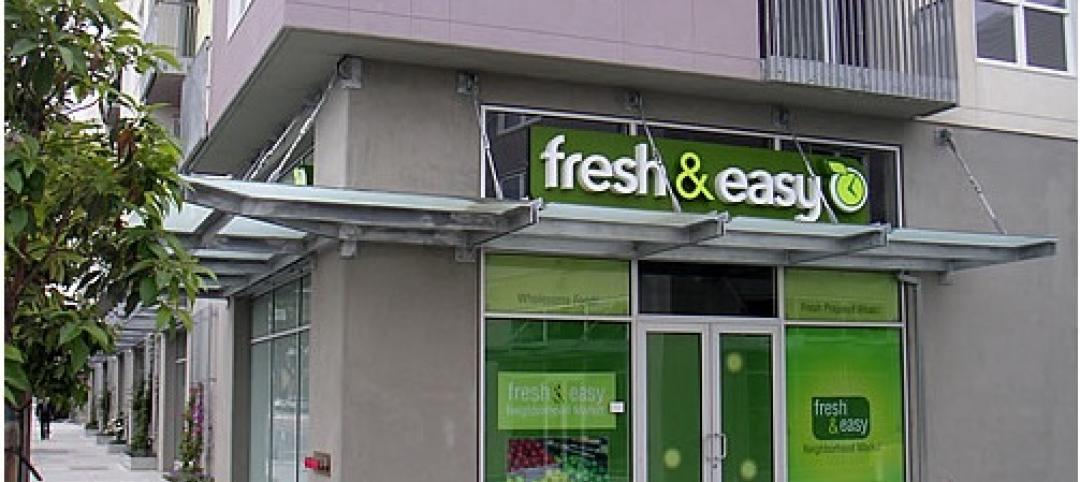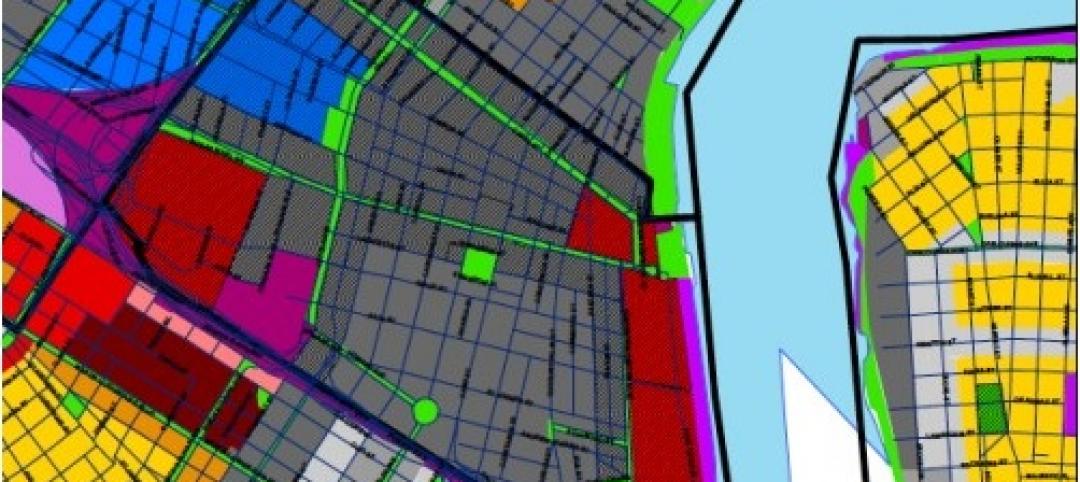Passive House, an ultra-efficient building standard that originated in Germany, has been used for single-family homes since its inception in 1990. Only recently has the concept made its way into the commercial market.
The Passive House standard requires buildings to use at least 80% less energy than a comparable conventional building, so air tightness is a must. The structure must be completely sealed against any air infiltration, at the same time preventing conditioned air from escaping. This means Building Teams must employ multiple layers of insulation in the walls, roof, and flooring, plus continuous air barriers and reliable windows and doors.
Once the building is completely sealed, a number of techniques can be engaged to regulate the temperature. Energy-recovery ventilators may be employed to keep a constant supply of fresh air circulating throughout the home. These heat exchange systems typically recycle the heat of exhaust air from kitchens and bathrooms by filtering it through the fresh air entering from the outside. This saves energy costs.
An analysis of the site and its climate also must also be completed. Effective planning of the window orientation can have a direct impact on the amount of natural daylight that will penetrate the space. Shading devices can be designed to control the amount of sun entering the space at any given time, which can contribute to heat gain.
Passive House enters the hospital sector
The Passive House concept is also spreading to other nonresidential sectors. The machinery and lighting required to run hospitals make them the largest users of energy across commercial sectors. In the Hoechst district of Frankfurt, Germany, a hospital renovation is set to become the first Passive House hospital in the world.
The state of Hesse completed a baseline study to determine the methods for executing such a large-scale PH project. The study notes that ventilation, heating and cooling, water, hygiene, and food service should all be considered when planning building systems around the Passive House standard in a healthcare setting. The study recommends the use of energy-efficient equipment, but notes that many medical devices have not yet been rated for their energy efficiency.
In multifamily buildings, the ratio of interior livable space to building envelope size is greater than that of a single-family home, so the envelope work is somewhat less demanding. Even so, the number of windows, doors, and balconies in multifamily projects means even more areas of the façade are vulnerable to air infiltration and expiration.
Despite these difficulties, commercial Building Teams are rising to the challenge. According to the Passive House Institute U.S., as of June 2014, 21 multifamily projects have been submitted for PHIUS Passive House certification: four have been fully certified, another four have been precertified and are under construction.
Stellar Apartments, Eugene, Ore., was the first multifamily project to achieve certification. Designed by Bergsund DeLaney Architecture & Planning for the St. Vincent de Paul Society of Lane County, this low-income housing project consisted of the construction of two nearly identical buildings.
The first, built to the Eugene Water and Electric Board’s Earth Advantage Standards, was designed to save 15% more energy versus a home built to code. The Building Team designed the second building to Passive House standards. The two buildings have identical floor plans, with six units on two stories, and are oriented in the same direction with similar shading. The main difference between them is the air tightness and the use of an energy-recovery system in the Passive House building.
The buildings were completed in July 2013, and are under study by students at the University of Oregon. The researchers will compare the energy use and cost savings, air quality, light quality, and acoustics of the buildings to determine whether a significant difference exists.

Stellar Apartments in Eugene, Ore., consists of two nearly identical low-income apartment buildings built to different sustainable standards. One meets the city’s Earth Advantage Program requirements, while the other (pictured above and left) is the first multifamily building to achieve Passive House certification. The Building Team included St. Vincent DePaul Society of Lane County (owner), Bergsund DeLaney Architecture & Planning, Hohbach-Lewin Inc., Poage Engineering, and Dougherty Landscape Architects. Photo: courtesy Bergsund DeLaney Architecture & Planning
The Orchards at Orenco is currently under construction in Hillsboro, Ore. Phase 1 of this affordable housing project, owned by REACH Community Development, includes 57 units, making it the largest precertified Passive House building to date.
The facility will employ traditional methods of Passive House construction—a continuous air barrier, extra insulation, and heat recovery system—to achieve up to 90% reduction in energy bills for the tenants. The roof will be light in color to reflect solar heat; it will have a foot of insulation, which is almost four times that required by the local building code.
The Building Team is using triple-pane glazed windows, with European-style tilt-turn operation. It is common for Passive House buildings to use windows made in Europe, as double-hung or slider windows manufactured in the U.S. do not offer the tightness required for PH certification.
Building Teams can apply some of the principles to multifamily projects, regardless of whether they are able to achieve full certification. Extra insulation, greater attention to detail when sealing the building envelope, and energy-efficient heating and cooling systems can have a positive effect on a building’s performance regardless of whether the building is able to carry the Passive House label.
Related Stories
| May 18, 2011
One of Delaware’s largest high schools seeks LEED for Schools designation
The $82 million, 280,000-sf Dover (Del.) High School will have capacity for 1,800 students and feature a 900-seat theater, a 2,500-seat gymnasium, and a 5,000-seat football stadium.
| May 18, 2011
Carnegie Hall vaults into the 21st century with a $200 million renovation
Historic Carnegie Hall in New York City is in the midst of a major $200 million renovation that will bring the building up to contemporary standards, increase educational and backstage space, and target LEED Silver.
| May 17, 2011
Redesigning, redefining the grocery shopping experience
The traditional 40,000- to 60,000-sf grocery store is disappearing and much of the change is happening in the city. Urban infill sites and mixed-use projects offer grocers a rare opportunity to repackage themselves into smaller, more efficient, and more convenient retail outlets. And the AEC community will have a hand in developing how these facilities will look and operate.
| May 17, 2011
Architecture billings index fell in April, hurt by tight financing for projects
The architecture billings index, a leading indicator of U.S. construction activity, fell in April, hurt by tight financing for projects. The architecture billings index fell 2.9 points last month to 47.6, a level that indicates declining demand for architecture services, according to the American Institute of Architects.
| May 17, 2011
Sustainability tops the syllabus at net-zero energy school in Texas
Texas-based firm Corgan designed the 152,200-sf Lady Bird Johnson Middle School in Irving, Texas, with the goal of creating the largest net-zero educational facility in the nation, and the first in the state. The facility is expected to use 50% less energy than a standard school.
| May 17, 2011
Gilbane partners with Steel Orca on ultra-green data center
Gilbane, along with Crabtree, Rohrbaugh & Associates, has been selected to partner with Steel Orca to design and build a 300,000-sf data center in Bucks County, Pa., that will be powered entirely through renewable energy sources--gas, solar, fuel cells, wind and geo-thermal. Completion is scheduled for 2013.
| May 17, 2011
Should Washington, D.C., allow taller buildings?
Suggestions are being made that Washington revise its restrictions on building heights. Architect Roger Lewis, who raised the topic in the Washington Post a few weeks ago, argues for a modest relaxation of the height limits, and thinks that concerns about ruining the city’s aesthetics are unfounded.
| May 17, 2011
The New Orleans master plan
At an afternoon panel during last week's AIA National Conference in New Orleans, Goody Clancy Principal David Dixon and Manning Principal W. Raymond Manning shared their experiences creating the New Orleans Master Plan, a document that sets a new course for the city, from land use and transportation planning to environmental protection.
| May 17, 2011
Do these buildings look like buffalo to you?
It’s hard to contemplate winter now that we’re mid-spring, but when the seasons change, ice skaters in Winnipeg will be able to keep warm in plywood shelters designed by Patkau Architects. The designers created temporary shelters inspired by animal behavior—specifically, buffalo bracing against the wind. Check them out.













